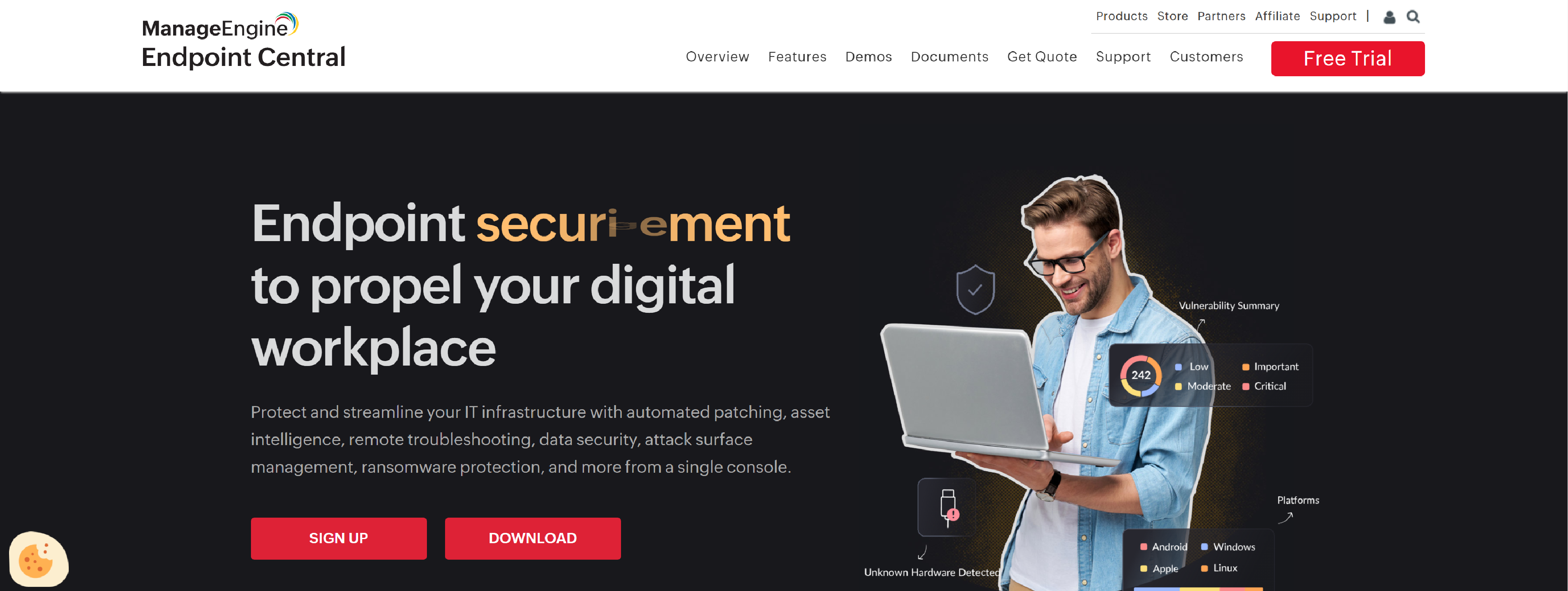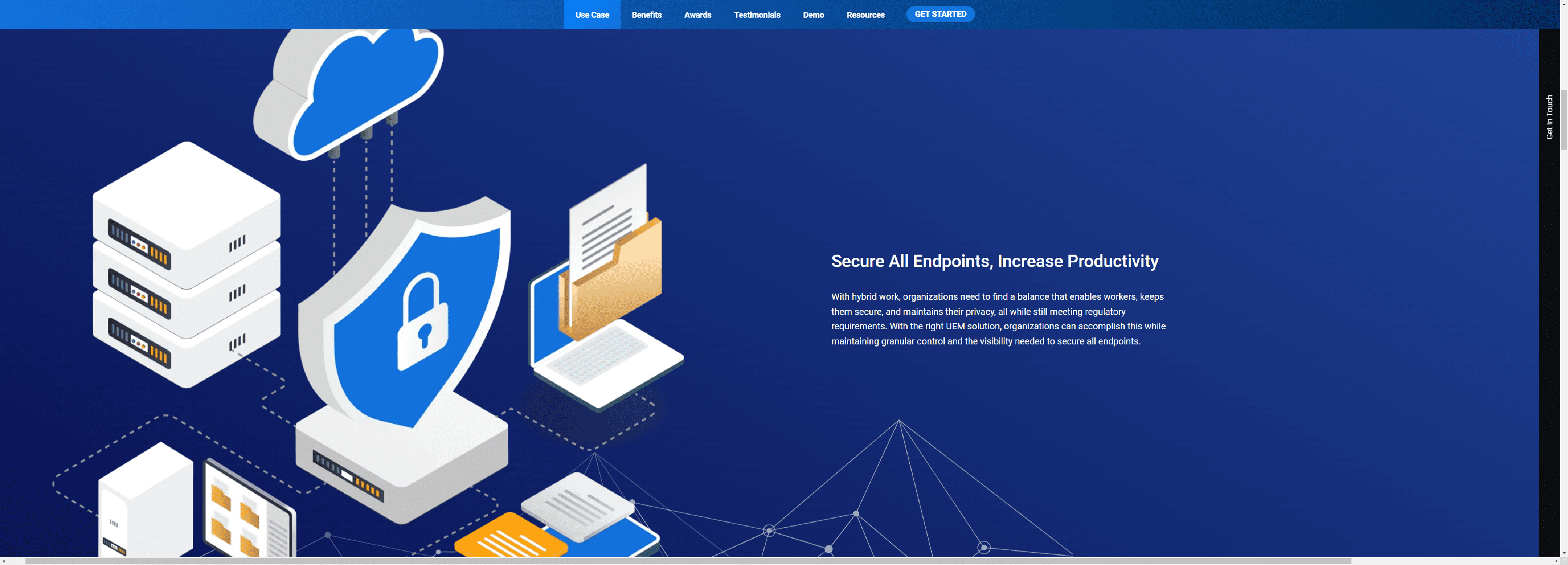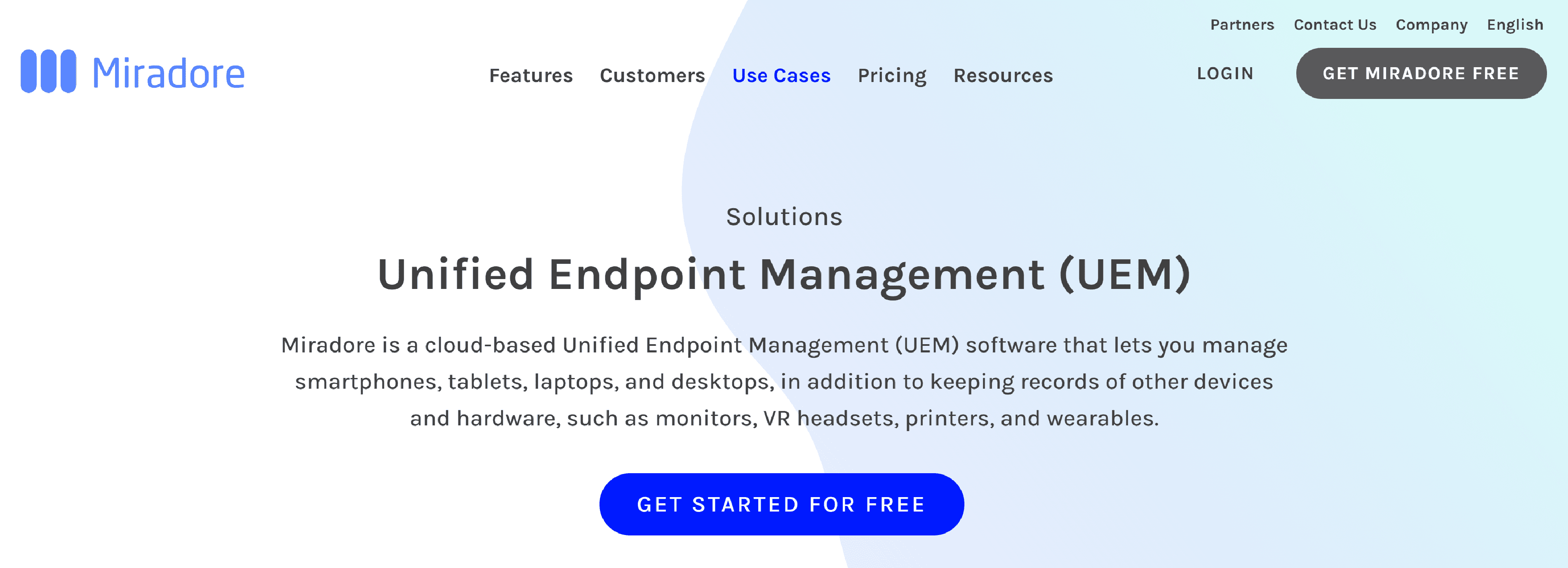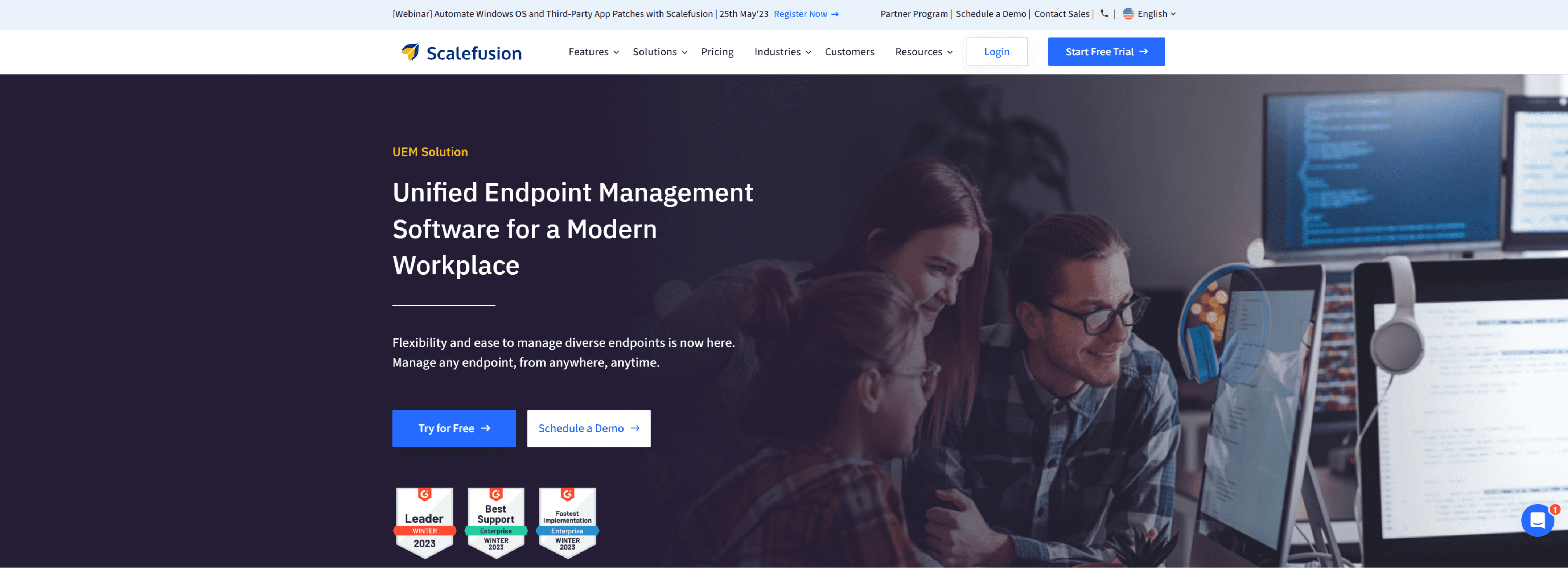Unified Endpoint Management (UEM) is an approach to managing and securing devices, applications, and data that are part of an organization’s endpoint ecosystem. With the proliferation of mobile devices and the growing trend of remote work, the traditional boundaries of corporate networks have become blurred. As a result, organizations need a unified approach to manage and secure the diverse range of endpoints in their environment, including desktops, laptops, smartphones, tablets, wearables, and IoT devices.
UEM platforms provide a holistic view of endpoints, allowing organizations to manage and control devices, applications, and data from a single console. UEM includes many features of traditional mobile device management (MDM) and enterprise mobility management (EMM) tools, such as device enrollment, policy management, app management, and security controls. However, UEM goes beyond mobile devices and extends these functionalities to desktops, laptops, and other endpoints.
By implementing UEM, organizations can gain several benefits, such as:
- Reduced complexity: Organizations can manage endpoints and security policies in a consistent and streamlined manner, reducing administrative overhead and improving operational efficiency.
- Enhanced security: UEM provides a centralized approach to endpoint security, enabling organizations to enforce policies, monitor compliance, and apply security controls across all devices, regardless of the platform, OS, or location.
- Improved user productivity: UEM platforms provide users with a consistent experience across all endpoints, making it easy to access company resources and collaborate with colleagues.
- Support for diverse endpoints: UEM platforms support a wide range of endpoints, including desktops, laptops, mobile devices, and IoT devices, providing organizations with a comprehensive solution to manage and secure their entire endpoint ecosystem.
UEM platforms typically offer the following features:
- Device enrollment: Enables users to register their devices with the UEM platform and allows administrators to manage and configure devices remotely.
- Policy management: Provides a centralized interface for administrators to create and enforce policies for endpoints, such as security, application, and network policies.
- App management: Allows administrators to manage and deploy applications across endpoints, including app distribution, updates, and licenses.
- Security controls: Provides a range of security controls for endpoints, such as device encryption, data loss prevention, and access controls.
- Reporting and analytics: Offers insights into endpoint usage, performance, and security, enabling organizations to make data-driven decisions and optimize their endpoint strategy.
UEM platforms offer several benefits over traditional endpoint management solutions, such as better support for diverse endpoints and a unified approach to security and policy management. However, deploying UEM requires careful planning and consideration to ensure a seamless transition and maximum benefits.
Some of the considerations organizations should take into account when deploying UEM include:
- Integration with existing systems: Organizations should evaluate how UEM will integrate with existing IT systems, such as directory services, email servers, and enterprise applications.
- Security requirements: Organizations should define their security requirements and evaluate how UEM can help them meet these requirements, such as compliance with regulations or protection against data breaches.
- User experience: UEM platforms should provide a seamless user experience across all endpoints, allowing users to access company resources and collaborate with colleagues, regardless of the device or location.
Unified Endpoint Management (UEM) is a comprehensive approach to managing and securing endpoints that are part of an organization’s endpoint ecosystem. By providing a unified approach to device management, security, and policy enforcement, UEM platforms offer several benefits, such as improved security, reduced complexity, and enhanced user productivity. However, organizations need to carefully plan and consider various factors when deploying UEM to ensure a smooth transition and maximum benefits.
ManageEngine Endpoint Central

ManageEngine Endpoint Central is an all-in-one solution for advanced endpoint management and security, giving full control to your enterprise’s IT team. It offers a sophisticated and integrated approach to endpoint administration and protection catering to the complexity of modern digital landscape.
With automated and granular patching Endpoint Central ensures compliance across Windows, Mac, Linux, including 850+ third-party applications. The Mobile Device Management feature helps manage and secure a variety of devices along with their respective apps and data.
It also enables IT teams to take control of unauthorized devices, regulate peripheral devices, accelerate OS deployment, ensure browser security and troubleshoot remote devices, all from a centralized console.
The added benefit of ManageEngine’s homegrown approach is the recently updated next-gen antivirus capabilities within the product with AI-assisted real-time behavioral detection, ensuring 24/7 malware security for all endpoints.
With over a decade of enhancement and advancement, Endpoint Central has elevated its ranks in the endpoint management and security space from being recognized amongst industry analysts to achieving a satisfied global customer base.
MATRIX42

Matrix42 Unified Endpoint Management (UEM) – manage and deploy endpoints and applications in one integrated solution.
- Single Pane of Glass – a central repository for all processes
- Maintain 100% control over your applications and devices at all times
- Flexible and secure deployment of the right applications
- Mobile and secure synchronization and exchange of content
- Efficient management across all platforms
- Always stay up to date and protected
IVANTI

Ivanti’s Unified Endpoint Management gives you insights to make better decisions that result in faster, more personalized service, while empowering teams to do their best work on the devices and apps they love without compromising security.
- Ivanti Neurons for Unified Endpoint Management
- Ivanti UEM for Clients
- Ivanti UEM for Mobile
- Ivanti Mobile Threat Defense
- Ivanti Neurons for Edge Intelligence
- Ivanti Neurons for Workspace
- Ivanti Neurons for Healing
- Ivanti User Workspace Manager
QUEST

Quest – provision, manage, secure and service all your network-connected devices with our unified endpoint management solution.
- Microsoft Windows
- Mac
- Linux
- Internet of Things
- Chromebooks
VMWARE

VMware – single cloud-native solution for unified endpoint management (UEM) of any device (desktop, mobile, wearables, rugged, IoT) for any use case.
- Multi-Tenant Architecture
- Active Directory Integration
- Zero Trust Security
- Full App Lifecycle Management
- Remote Onboarding and Configuration
- Role Based Access Control
BLACKBERRY

BlackBerry UEM solution provides cross-platform, end-to-end security to support a wide range of devices for your organization.
- Secure All Endpoints, Increase Productivity
- Securely Deploy Corporate Apps on BYO Devices
- Encrypt Data for Secure Communications Between Devices
- Secure Productivity
FILEWAVE

FileWave’s unified endpoint management solution empowers IT teams to manage and support Apple, Android, Windows, and Chrome devices from anywhere in the world.
- Device Management
- IT Asset Management
- Your Streamlined Solution
- Remote User Support
RAYNET-INC

RayManageSoft Unified Endpoint Manager manages traditional and modern endpoints on one central platform.
- Intelligent reporting & data management
- Hardware discovery & software inventory
- Integration Package Store
- Vulnerability management
MIRADORE

Miradore UEM is a perfect solution for managing your company smartphones, tablets, and laptops in a single portal and keeping records of other IT devices.
- Manage Android, iOS, and iPadOS
- Manage Windows and Mac computers
- Keep records of other devices
SCALEFUSION

Scalefusion UEM Solution enables you to manage, deploy and secure endpoints in your enterprise.
- Application Management
- OS Updates Management
- Certificate Management
- Content Management
- Network Settings
- Device Monitoring
- Task Automation
- User Data Privacy
- Integrations
SOTI
![]()
SOTI goes beyond traditional MDM/EMM/UEM by providing enterprise software solutions that allow companies to manage and optimize all their mobile hardware.
- SOTI ONE Platform — Connecting Everything
- Mobility Management
- Diagnostic Intelligence
- Digitize Processes
- Printer Management
- Unified Security
- Community
HEXNODE

Hexnode’s Unified Endpoint Management suite lets you remotely manage and secure desktops, laptops, mobiles and IoTs from a single console.
- Manage any platform and any device
- Modern Device Management, unified
- Hexnode plays well with others